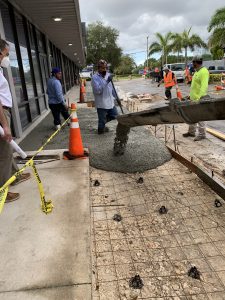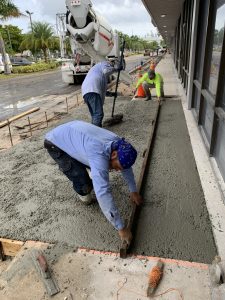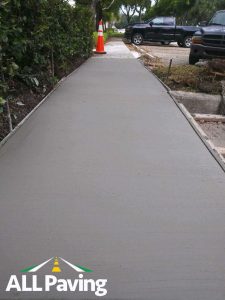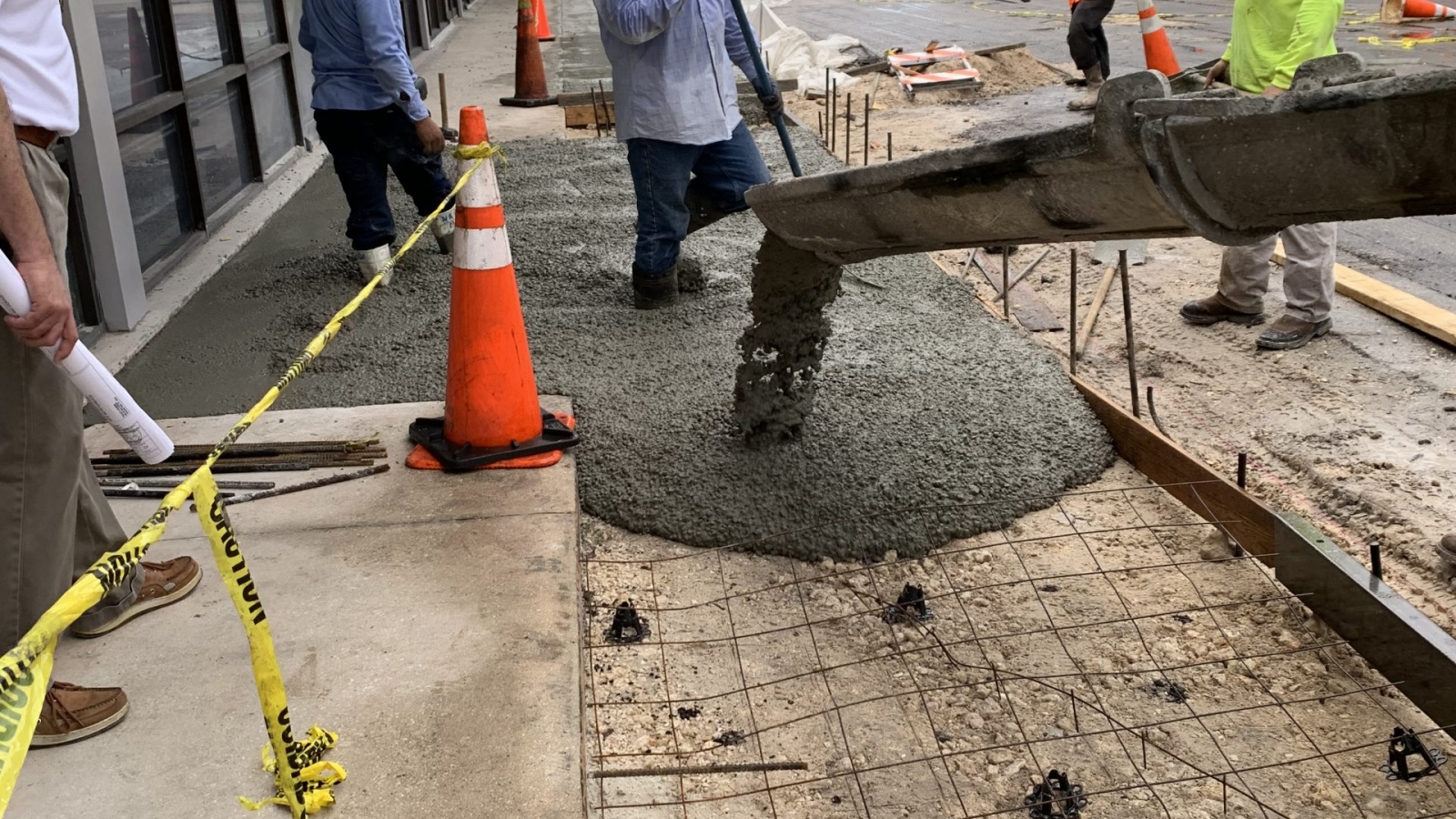Important elements for a Proper Concrete Sidewalk
Concrete sidewalks can be structures that last for long periods of time if they are properly taken care of, however, negligence of these structures often results in broken slabs, trip hazards and costly repair bills. One of the factors that has a considerable impact on sidewalk longevity is construction quality. Concrete sidewalks can start to fail over time if poor materials are used and proper design and construction practices are ignored.
There are several aspects that need to be evaluated when considering getting a new concrete sidewalk:
- First and foremost, make sure to hire a reputable concrete contractor to take care of your sidewalk construction project.
- Good compaction and groundwork of the subgrade underneath the sidewalk are vital. The steadiness of the compaction is just as important as the degree of compaction. An even compaction decreases the risk of cracks developing on the concrete sidewalk.
- Even though concrete can be located straight on the subgrade, it is much better to place a rough subbase layer between the compressed subgrade and the concrete slab. This will provide extra support and also bond over minor subgrade flaws. This is really significant in areas where the original subgrade soil is vulnerable to contraction due to moisture reduction.
- Normally, as a standard procedure to achieve a reduction in cracking of the slab the use of contraction joints is recommended. This way, it is possible to control the location where the cracks are generated by contractions in the concrete through a cut in the same.The depth at which the cut of the control joints must be made is approximately a quarter of the thickness of the slab. In addition, it is suggested to maintain a distance between them of about 2 to 2.5 times the thickness of the slab in inches, if the thickness is 5 inches the separation should be 10 to 12.5 feet.
- When building a sidewalk, it is necessary to evaluate the surrounding area as there may be the presence of trees that could damage the concrete slabs due to the growth of their roots causing it to rise or break. In case this occurs, a certified arborist is needed to remove the roots, which can affect the health of the tree.
As a rule of thumb
Maintain a distance of two sidewalk widths between nearby trees and sidewalk edges. If you want to locate a tree closer to the sidewalk, plant smaller species. A deep-rooted tree such as an oak or maple will cause less slab uplift than a shallow-rooted tree such as a spruce or poplar.
These roots may cause damage below the concrete and lead to leveling concrete sidewalk trip hazards. These issues can be solved easily, as explained by the Onfloor experts on their news section.
Proper concrete curing = Good Sidewalk
In warm temperatures, wet curative or the application of a liquid membrane-forming curing compound is recommended. This is done to form the proper dampness in the poured concrete while it gains more strength.
Curing should begin directly after finishing because the concrete surface can dry within 20 to 30 minutes under sunny, windy and warm conditions.
This is one of the most important elements to consider when it comes to the construction of concrete sidewalks, here are some tips that we suggest to have in mind during the process.
- Wet curing is the process in which concrete is watered 5 to 10 times a day during the first 7 days. This is necessary in order to prevent moisture from evaporating quickly, allowing concrete to increase its quality and strength by up to 50%. (This does not apply in cold climates).
- There are other solutions in case you cannot practice moist curing for any reason. One of them is the use of a concrete insulating blanket that can be bought in DIY stores and allows to slow down the evaporation process of moisture. First of all, you must ensure a well doing concrete moisten, then cover the surface with the blanket and repeat the same process for at least 7 days.
- If you want to accelerate the curing process without daily attention to the progress, we suggest using a curing pond. This alternative will achieve the expected results in 3 days instead of 7, just make sure the water level stays above the concrete slabs all the time. An issue with this alternative is the need for soil to surround the poured concrete slab to keep the water contained. That is why this technique is practiced primarily by concrete contracting companies.
- In case another method did not work out for your project or did not give you the results you were expecting, there is a better option: curing compounds. Unlike the traditional protection methods, this type of process does not need water to maintain the moisture in the concrete work, instead, the humidity is reached by the compound, which works as a protector coat that controls the moisture evaporation, curing it by a constant rate. Some of those compounds disintegrate over time, but some others have to be cleaned to get rid of them when the curing process is done.



Crack Issues in Concrete Sidewalk
In a sidewalk construction project it is important that concrete contractors are aware and follow the well-established guidelines in order to pour the concrete correctly. Also, it is necessary to use adequate construction tools and building materials to secure the highest quality on the project.
Another reason why cracks appear is that the concrete mix does not need so much water to reach its maximum strength. In most residential projects, employees usually use a large amount of water because it makes the concrete easier to install, but this excess of water also reduces the strength properties of the concrete.
Finally, in order to avoid unexpected results, concrete has different types of strength properties, according to the type of concrete the contractors use in the project, its strength and water need amount will vary so take a moment to choose the option that best fits your needs.

